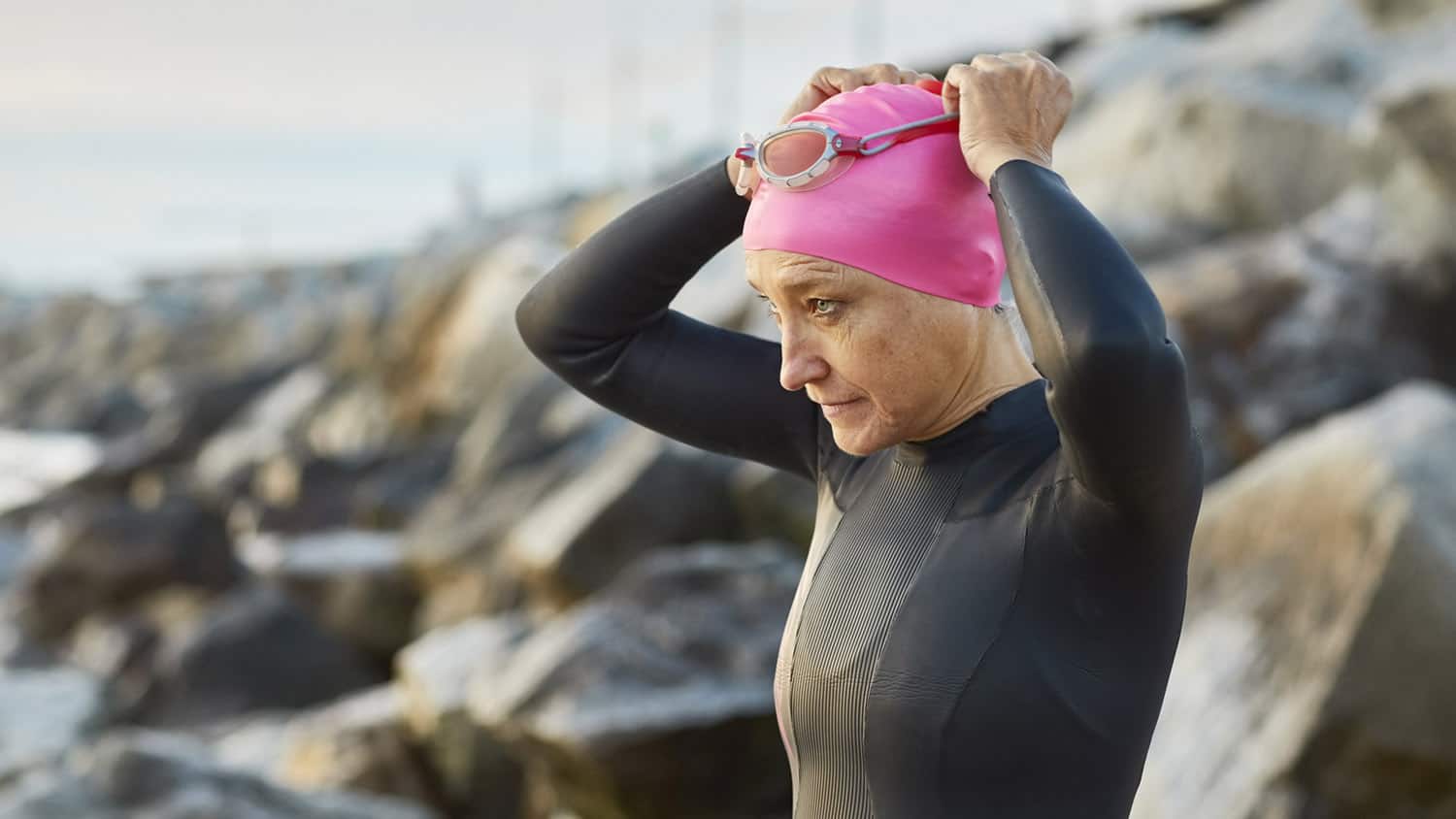
Answering 6 Questions on Strength Training as an Aging Well Strategy
I reversed my own osteoporosis with a combination of important elements like good sleep, whole-food nutrition, improved gut health, and weightlifting, as well as walking with a weighted vest.
Over the last few years, I have used my expertise in exercise and alignment to create programs that help women with osteoporosis or osteopenia. These online programs teach women how to use weight-bearing exercise to promote bone growth.
Before you begin a strength training journey, you may have a lot of questions about whether this is a proven strategy. You might also wonder how it works, how fast it works, and more.
Here are the questions I get asked most often:
Why Does Weightlifting for Muscle Strength Affect Bone?
Studies have shown that muscles and bones are a connected system. Strengthening your muscles with external load (weights) creates force that sends signals to the bones to build more bone, as an adaptation to the force.
In addition, the load is site specific. Thus, one must load at the hip, the spine, the wrist and so on to protect all these areas. There is a direct dose relationship with using load. This means that even a little weight has some benefits (there are studies to support this). Heavy weight and lifting more than once a week creates even more benefit!
What Is Progressive Loading?
Progressive loading is technically named “progressive overloading” in the strength training world. It involves gradually increasing the weight, frequency, or number of repetitions in your strength training routine, which helps you build muscle.
This is because the muscle adapts to the stress put on it. It challenges your body with new inputs and stress (good stress) and allows your musculoskeletal system to get stronger.
In summary: Muscle and bone adapt when they are placed under load. Load is a good stress that creates adaptation in the form of more capacity to handle the stress or load. Increased capacity results in having more muscle and thus, more bone.
Is It True That Lifting 10% Of One’s Body Weight Is the Ideal to Be Striving for?
The 10% number that you have heard is regarding walking with a weighted vest. Doctors recommend up to 10% of one’s body weight in a vest for walking. If you have previous spine fractures or an extremely kyphotic thoracic spine, this may not be the exercise for you. Please talk to your doctor before using a vest.
I recommend beginners walk with the vest alone and slowly add weight. Therefore, a vest that has adjustable weight capability is best! It is tempting to buy an inexpensive vest that is exactly 10% of your weight, but remember: the principles of strength training apply to walking with a weighted vest. You should start small and add on weight as you get stronger.
What Weight Do I Need to Lift to Build Bone? Is It a Percentage of My Body Weight as Well?
The amount of weight you use for weightlifting exercises is not a specific number or percent. I have a video on choosing a weight in Bone Boot Camp that I will try to summarize here.
Essentially, one should experiment to find what is do-able in good form for eight to 12 reps but not higher. You should be getting fatigued at the end of your eight reps for instance and be thinking that more reps would risk bad form. This is a good time to stop. Over time you will get to nine reps and eventually 12.
For example, if you can execute 25 bicep curls with a two-lb. weight, that is much too low. If you can barely do four reps with a 10-lb. weight, then your ideal weight would lie somewhere in between two and 10 pounds.
You might be lifting five-pound weights for eight reps for one session and you feel fatigued. But you are not done there. You will increase the number of sets over time from one to two and then three. Taking a couple minutes between sets is fine, but do not wait a half hour.
So, Increasing Weight Over Time Is All I Need to Know?
You also want to consider frequency. Once a week is not enough; two to three times a week is ideal. This repetition with lifting and taking rest days allows the stress to initiate. I cannot emphasize enough the importance of rest – it allows the change to happen!
Time under tension is a key concept. The number of repetitions and the number of sets are two factors you want to work with because they give you more or less time under tension. We can adjust the time it takes to do one rep. The slower you go, the more time you experience under tension. Thereby increasing the difficulty.
At What Point After I Start Lifting Weights Will I See Higher Bone Density?
Results will vary from person to person depending on several factors. Non-invasive bone quality tests are a high-resolution MRI or CT scan. They can reveal bone microarchitecture or quality.
A TBS score is a computerized enhancement to your DEXA scan that estimates bone quality. But these tests are not practical for the mass market at this time, so for the purposes of answering this question I am discussing density only here.
Studies normally begin with a baseline bone scan for all participants. The studies all choose an endpoint for taking a new scan and comparing the results. I am not aware of any studies where the participants in a trial were scanned at short intervals such as only a few weeks. The shortest interval I have seen in a study was five months and modest gains were reported.
The LIFTMOR protocol was an eight-month intervention involving heavy weights. It is the benchmark, in my opinion, for positive results. However, this is not a protocol one can follow without supervision.
I created a home based weightlifting program for myself that is modeled on the Liftmor studies, but that is adjusted for safety and practicality at home. Although one person (me) is not a study, I did achieve positive results with my program, Bone Boot Camp.
I hope this article has answered your questions about weightlifting, progressive loading, and building bone so that you can make informed choices about the exercise that is right for you and begin building the muscle and bone strength for the active life you desire.
If you’d like a guide on your bone density journey, please contact Sarah.
Let’s Have a Conversation:
What have you heard about weightlifting that sounds too scary or difficult to try? Do you have any experience lifting weights? What can you share about walking with a weighted vest? Please tell us your story in the comments below.
Disclaimer: This article is not intended to provide medical advice. Please consult with your doctor to get specific medical advice for your situation.







I’m in a weight lifting program 2-3 times a week with rest in between. This may sound unimportant but I’m lifting 5 lbs now doing biceps, forward & reverse lunges , many other exercises all with weights. I also do “controlled jumping” as I refer to it. I’ve done some research about this jumping. Starting out with 60 jumps, jumping 20 jumps with 20-30 seconds rest in between. I also read that up to 300 jumps might be considered enough. I’m up to 120 jumps & I’m beginning to think 300 is possible 💕 if you cant jump then do heel lifts and come down hard on them. I really am actually getting STRONGER 💪 I also need to incorporate more protein in my diet. Oh ladies please get that much needed protein. Thx for listening 🥀
If you purchase a weighted vest, walk around the store wearing it for a little while. I ended up buying one that was too large, meaning, it pulled down on my shoulders and over my hips instead of riding atop my hips. This kind of stress on the shoulders is not a goal. I
ended up giving it to a larger person (a man). Just a tip because my guess is they are
designed with a man’s body in mind.
were you able to try the vest on first or was it an online thing?
The “bone boot camp” that you linked to facebook looks interesting. I’m starting with the 2 lb weights and then try my 5 lbs. Thank you.